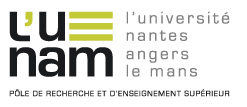Validation of plasma amino acid profile using UHPLC-mass spectrometer (QDa) as a screening method in a metabolic disorders reference centre: Performance and accreditation concerns
Résumé
INTRODUCTION: Amino acid (AA) analysis in plasma is essential for diagnosis and monitoring of inborn errors of metabolism (IEM). The efficacy of patient management is governed by the rapidity of AA profile availability, along with the robustness of the method. French quality guidelines and progress made in analytical techniques have led biologists to develop AA profile exploration via mass spectrometry (MS). OBJECTIVES: The aim of this study was to validate an analytical method with a single quadrupole mass spectrometer (MS) and to suggest reference values in regard to French quality and IEM society recommendations. DESIGN AND METHODS: Plasma samples from patients were deproteinised and derivatised with AccqTag™ reagent. Analysis was performed by reverse-phase chromatography coupled to QDA detector. We evaluated accuracy, intra-days and inter-days precision and limit of quantification by the β-expectation tolerance interval method for 27 AA. Method comparison was performed with the standard method (ion exchange chromatography, IEC) on Jeol Aminotac® and to tandem MS. Reference values were established on AA concentrations of the cohort of patients who had no IEM. RESULTS: Our method allowed the separations of almost all amino acids with a total run time of 12 min. Separation of isoleucine and alloisoleucine was incomplete (R = 0.55) but without impact on biological interpretation. Precision, accuracy and quantification were satisfactory (intra-days coefficient of variation (CV) was <5%, inter-days precision CV <10% and accuracy <15%). The limits of quantification were validated between 1 and 900 µmol/L. Results were comparable between the new method and IEC. CONCLUSION: Ultimately, we validated a rapid method on plasma for quantifying 27 amino acids that can be used in routine practice, according to French quality laboratories and SFEIM (French Society of Inborn Error of Metabolism) recommendations. Furthermore, estimated reference values were similar to those found in published studies focusing on other methods. Despite a lower specificity compared to tandem MS, the simplicity and rapidity of our method are the main advantage of this technique and place it as a major tool in IEM diagnosis and management.
Fichier principal
 Bruno et al. - 2021 - Validation of plasma amino acid profile using UHPL.pdf (1.43 Mo)
Télécharger le fichier
Bruno et al. - 2021 - Validation of plasma amino acid profile using UHPL.pdf (1.43 Mo)
Télécharger le fichier
Origine : Fichiers produits par l'(les) auteur(s)

